After cooking up a storm, you load the dishwasher and let it do its thing. Later, a loud ‘bleep’ calls you to the kitchen. You open the door expecting clean crockery and spotless silverware… only to find your dishes are still dirty.
Don’t worry if you’ve got this problem on your hands. A dishwasher not cleaning is a nuisance — but we’re here to help with a list of quick fixes you can do yourself. Or you might need to call in the experts for a dishwasher repair.
1. Check the spray arms
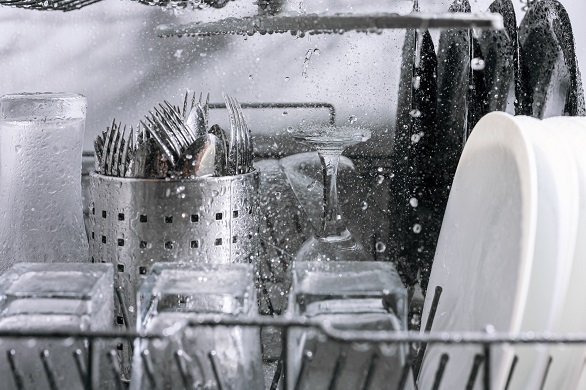
The spray arms are the plastic propellers inside your dishwasher. A pump pushes water through them at high pressure. This makes them spin and spray water evenly around the machine. If your dishwasher isn’t cleaning, it could be due to debris stuck in the arms. To get to the bottom of any blockages:
- Remove the racks and utensil holders
- Check the holes in the arms are clear (clean away any stuck-on food with an old toothbrush)
- Check your user manual to see if you can lift the lower arm out (the upper arm might have a screw that needs to be turned clockwise for it to be removed)
- Clean the arms in the sink, holding each one under a tap to check the water flows through it properly (if not, the arm probably needs replacing)
Just remember to switch off your power supply before putting this to the test.
2. Inspect the filter
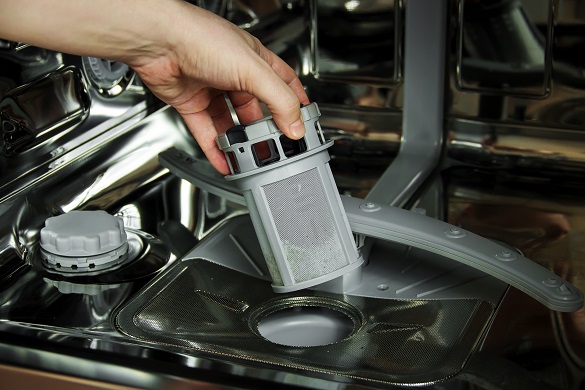
The filter in your dishwasher needs to be cleaned and emptied on a regular basis, so it can keep trapping loose food. Signs of a full filter include a bad smell (from food clogging up), gurgling noises and dishes not coming out clean.
The filter is usually near the middle, in the base of the dishwasher. If you can’t find it, check the diagram in your user manual. If you think this is what’s causing the issue:
- Pull out the lower dish rack
- Remove the filter by gently twisting or pulling (there might be a metal filter plate to remove and clean too)
- Scrub the inside and outside of the filter with an old toothbrush or soapy sponge
- Run the filter under a tap to clean off every bit of grime
Just remember to switch off your power supply before putting this to the test.
3. Make sure you’re using the right detergent
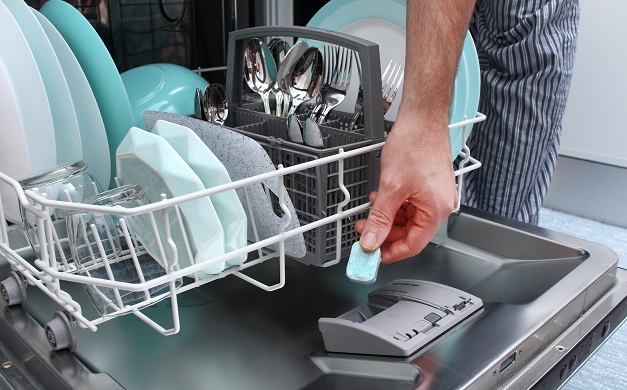
Visit any big supermarket and you’ll find shelves full of detergents, including gel, liquid, powder and tablet varieties. There are even detergents made especially for hard water areas and tougher-to-clean dishes.
As tempting as it is, you shouldn’t improvise with washing-up liquid. Like a scientific experiment gone wrong, if this kind of soap is let loose in your dishwasher, it can foam up and leak onto the floor. The foamy bubbles can also damage parts of your dishwasher.
As well as using the best detergent for your machine, make sure you’re using the right rinse aid and dishwasher salt.
4. Is the water hot enough?
If the dishes are dirty and cold at the end of a cycle, there could be a problem with your water supply or the heating element. You can rule out any supply issues by checking the hot water works in your sinks and shower.
The heating element inside the dishwasher warms the water, so it can activate the detergent and clean your dishes better. It also heats the air for drying them. And if your dishes are coming out sopping wet, it’s because they haven’t been dried properly.
If you think the element might be faulty, call in an engineer to check it thoroughly. (They might need to replace it.)
5. Are you overloading it?

Packing your dishwasher with bulky items, like large pots and pans, can block the spray arms so that some dishes will come out cleaner than others. At the same time, you don’t want to underfill your dishwasher — as running extra cycles every week can really bump up your water bills. Use the different compartments and racks as a basis for how much your dishwasher can fit.
Make sure you're taking advantage of the space inside and that every item you load is dishwasher safe. Put glasses, large utensils, small bowls and mugs on the top rack. Cutlery, plates, pans and larger bowls belong on the bottom. Check you're leaving enough space between dishes so the water can reach around and clean each one thoroughly. As for chopping boards and trays, put these on the sides and back so they don't interfere with the water flow.
Nope, it’s still not working right
If you’ve followed all the steps above and you’re still not sure what the problem is, it’s time to call in a professional.
Our blog is loaded with more related articles
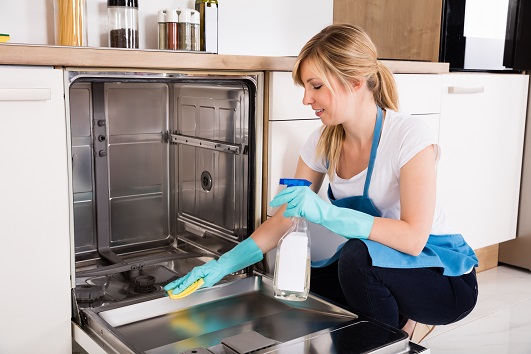
Dishwasher tips
How to clean your dishwasher
If it’s not cleaned regularly, your dishwasher can become smelly from grime and mildew build-up. Learn how to thoroughly...
Read more
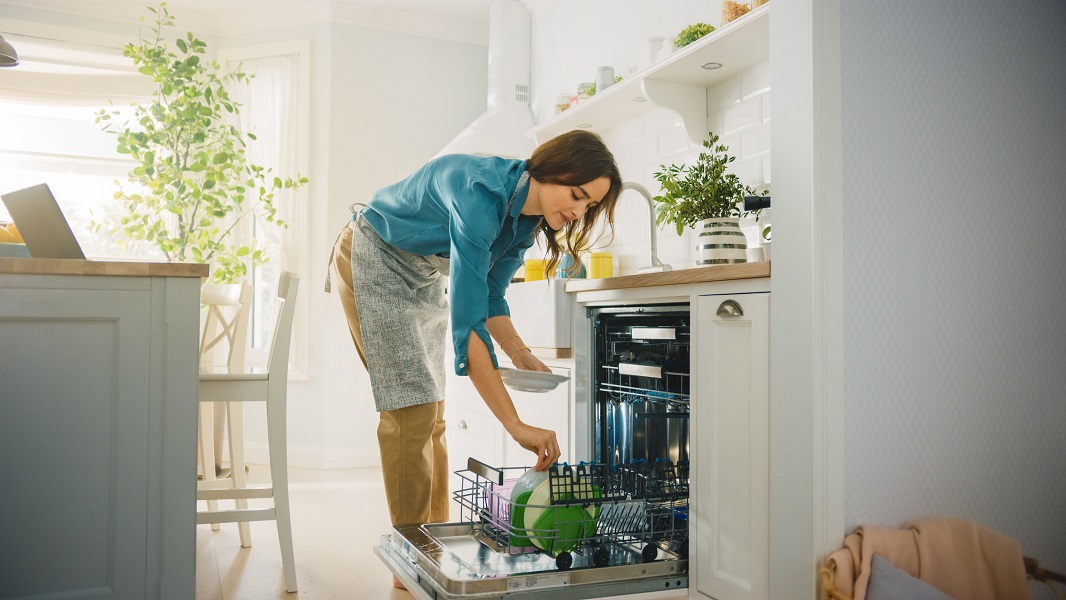
Dishwasher tips
Dishwasher symbols explained
If you’ve ever wondered what the symbols on your dishwasher are, our guide explains the meaning behind them, helping you...
Read more
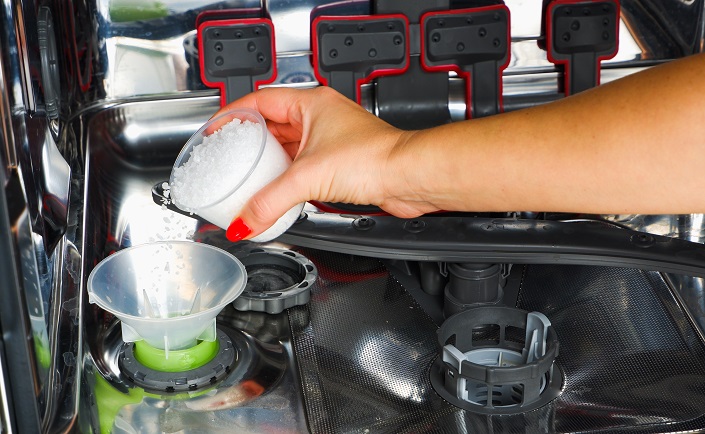
Dishwasher tips
A guide to rinse aids and dishwasher salts
From whether you need rinse aids to understanding the purpose of dishwasher salt, we’ve put together a guide answering ev...
Read more
